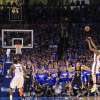The frost-covered boards buckled under a hit, the crowd gasped—and the referee’s whistle rang like a boxing gong. In that instant, a hero forged of steel will, not stat sheets, skates onto the rink: the enforcer. He rarely scores with a flick of the stick, yet his mere presence can redraw the geometry of a game, keeping rivals away from prized snipers. Enforcers are hockey bodyguards whose hand-to-hand diplomacy has balanced speed, skill, and basic safety on the ice for decades.
Who Are Hockey’s Iron Guardians
The term tough guy was quickly shortened by Anglo-Saxon reporters and adopted by Russian-speaking fans as the concise “taf-guy,” becoming a staple of hockey slang. In NHL records he is also listed as an enforcer. This specialist in physical play has three core tasks: intimidate, protect, redirect.
- Intimidate. A fearsome reputation makes rivals think twice before roughing up your star center.
- Protect. In “sandwich” situations the enforcer plants his body between aggressor and teammate, pinning the opponent to the boards or knocking him off balance with a heavy hit.
- Redirect. A timely fight can flip the emotional rhythm of a game: a team trailing 0-3 may ignite after a scrap, while the opponent loses focus.
Today’s iron guardian is far from a cartoonish brute. Modern leagues demand that even a role-playing enforcer make sharp passes and hold his own in positional defense. If such fighters logged a token five minutes in the 1980s, they now must skate full shifts without liability.
From Canadian Fairs to NHL Mega-Shows: Roots of the Physical Style
Early hockey, born on Quebec’s frozen ponds, resembled axe hewing more than graceful skating. Few rules, scant protection—fists and even wooden sticks often did the talking. By the 1900s clubs hired “brave lads” to tame the opposing ruffians, prototypes of the modern enforcer.
In the 1960s, as the NHL expanded and television boomed, fighting became prime entertainment. A single prolonged bout could skyrocket ratings. League management legalized a “five-minute major” for fighting yet kept these duels as a sanctioned spectacle. By the 1970s every self-respecting club carried at least one enforcer—ushering in the enforcer era.
The Unwritten Code: Why an Enforcer’s Hands Are Tied by Honor
The linesman notes helmets off, sticks set aside—the crowd witnesses a duel governed not by rulebook but by chivalric norms. This “code” is passed down through generations:
- No hitting a man down. If the opponent loses balance, the fight is over.
- Strength versus strength. A heavyweight calls out a heavyweight; attacking a rookie or injured player is disgraceful.
- Clear motive. Defending a teammate or answering a cheap shot justifies the fight. Brawling solely for a highlight reel is unacceptable.
- Respect after battle. A nod or tap on the pads signals admiration for the rival’s courage.
Paradoxically, these tenets reduce chaos: players fear crossing the line, knowing the answer will come not from the referee but from an enforcer’s fist.
The Era of Fistic Romanticism: The 1970s–1990s as the Pinnacle of Enforcer Culture
When the 1974-era Philadelphia Flyers hit the ice, opponents froze: the Broad Street Bullies fielded three heavyweights and captured back-to-back Stanley Cups. In the 1980s Bobby Probert and Joey Kocur formed Detroit’s legendary Bruise Brothers; their fights aired in news segments as often as Steve Yzerman’s goals.
By the 1990s the phenomenon reached a cultural crescendo: Tie Domi autographed hockey cards sold for more than some scorers’. TV stitched montages of brutal knockouts, while documentaries like Ice Warriors drew crowds. Rules tightened, yet until every position demanded blazing speed, enforcers reigned.
Red Armor: Soviet Masters of Physical Diplomacy
In the USSR, fighting was officially labeled a “bourgeois relic,” but the absence of fistfights didn’t cancel physical pressure. Valeri Vasiliev could alter Canada’s attack trajectory with one open-ice hit during the 1972 Summit Series. Viktor Kiksa famously “locked” the boards, denying North Americans space. Forward Andrei Khomutov, though non-fistic, intimidated stars with sharp “corridors” and fierce checking.
These Soviet “physical diplomats” rarely brandished fists in public, yet quelled aggression through iron endurance and near-soccer-style body battles.
Continental Tough Guys: KHL Heroes Who Never Step Back
After the USSR dissolved, the KHL preserved respect for physical play:
- Aleksei Emelin (Ak Bars, then the NHL and back) is a master of blistering body checks whose center-ice raids lift fans to their feet.
- Dmitri Kalinin, once Buffalo’s menace and the heart of SKA’s blue line, accepted any heavyweight’s challenge while staying useful at the point.
- Maksim Sushinsky is a rare sniper who mixed soft wrist shots with a readiness to warm up his fists when an opponent’s gear rose too high.
The KHL has gradually lowered the ceiling on collisions, yet a top club still seems unimaginable without a pair of foundational shields.
NHL Ice Gladiators: When a Name Roars Louder Than the Siren
Bobby Probert embodies the “double threat”: 3,300 penalty minutes plus 163 goals. His duels with Tie Domi are textbook sports psychology—one fight lifted Detroit’s morale more than a coach’s timeout.
Tie Domi boasted, “I may be short, but I can handle any giant,” and proved it with 285 career fights. In the 2002 playoffs he added eight assists, busting the “all fists” stereotype.
The tragic figure of Derek Boogaard highlights the job’s dark side: continual blows, concussions, and painkillers took the “Minnesota Monster” at 28. His death spurred a new league program to monitor head injuries.
Duels That Shook the Stands: A Chronicle of the Most Iconic Fights
- Probert – Domi, 1987. Gloves dropped as if on cue. Ten crisp jabs, a brief pause, another flurry—and the arena roared as though a final had been won. No one fell; a draw, yet both became immortal stars.
- Probert – Boogaard, 2008. A veteran faced a young giant. Fans expected a knockout but saw a respectful exchange: experience out-muscled inches.
- Nikolishin – Pelletier, 2009 in the KHL. Russian audiences tasted North American showmanship: helmets flew, officials watched politely from two meters, and mutual nods drew thunderous applause.
- Emelin – Brown, 2012. A furious yet technical bout: short flurries, smart jersey grips—proof that the 21st-century enforcer trains not only on ice but also in the MMA gym.
The Physical Element of the 21st Century: The Transformation of the Enforcer’s Role
As the game sped up and immobile defenders became liabilities, the classic “five-minute goon” all but vanished. Leagues imposed stiff head-hit sanctions, accelerated line changes, and introduced the instigator rule: sparking a fight can mean ten minutes and a misconduct instead of five.
The result is evolution: Enforcer 2.0 must skate as fast as a third-line forward, seal the boards, and thread accurate stretch passes. Heavy collisions remain: the 2024 Stanley Cup Finals showed that the hit factor still decides playoff series.
Ice Remembers Steel: A Look at the Future of Physical Specialists
Hockey is developing new helmets with impact sensors, focusing on technical skating, and promoting the concept of “smart physical contact.” Yet fans still rise when a defender empties a lane with a shoulder or when two heavies drop the gloves for an honest exchange.
For high-speed virtuosos, the enforcer remains a safeguard; for coaches, a psychological switch capable of turning a series with one quick sprint to center ice. Marketing departments will long sell sweatshirts bearing the name of the player who “set the captain’s bully straight.”
If you, inspired by these “guardian angels of the ice,” want to test tactical hypotheses in pre-game analytics, start small: pick a free bonus, study hit statistics, and find the very moment when a fist replaces a timeout. Be bold—and may every wager, like every enforcer’s shift, be timely and on target.





